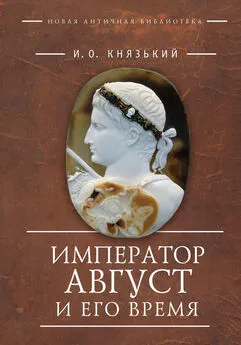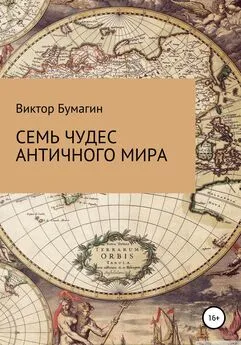Игорь Князький - Император Диоклетиан и конец античного мира
- Название:Император Диоклетиан и конец античного мира
- Автор:
- Жанр:
- Издательство:Московский общественный научный фонд
- Год:1999
- Город:Москва
- ISBN:5-900307-22-4
- Рейтинг:
- Избранное:Добавить в избранное
-
Отзывы:
-
Ваша оценка:
Игорь Князький - Император Диоклетиан и конец античного мира краткое содержание
Опираясь на широкий круг источников и исследований, автор анализирует эволюцию императорской власти, новую ее систему, государственное управление, экономическую политику Диоклетиана. Особое внимание уделено религиозной политике основателя Домината, последнему великому гонению на христиан в Римской империи.
Книга предназначена для широкого круга читателей.
Император Диоклетиан и конец античного мира - читать онлайн бесплатно полную версию (весь текст целиком)
Интервал:
Закладка:
The events of II centure A. D. testified about deep changes in the economic and social life of the Empire. The change of political organization was inevitable. Only amplification of the state authority, based on a powerful army and a remified bureaucratic machinery of the State, could prevent recurrence of the events of middle of III centure A. D.
The task of complite transformation of political organization of the roman society also was carried out by Emperor Diocletian.
First of all Diocletian decided to create a new system of the imperial authority. He established the constant institute of co-governors. At first — diarchy, when the Empire is operated by two emperors one in the east, other on the west, and then — tetrarchy, when together with two senior emperors — Augustus — appear the younger ones — Caesars. With Augustus Diocletian the Caesar was Galerius, with Augustus Maximian — Constantius Chlorus. In the first, and, by the way, in the last time in the history of Rome Diocletian attempted to set up an absolutely precise system of succession to the throne — two Augustus would be replaced by Caesars, which becoming augustus select new caesars for themselves. Also there was established a temporary terminator of government of Augustus-20 years. The status of the emperor finally changed too. Henceforth the ruler of Rome was not princeps — the first in Senate, but he was dominus now — the Master. Dominus et Deus — Master and Lord — it is an official title of Roman emperors in the epoch of Dominate. For sthrenghtening prestige of the imperial authority Diocletian sets up imperial ceremonial at his court, borrowed it from assanian Persia.
Under Diocletian, in connection with establishment of Tetrarchy, the administrative reform of the Empire was conducted too. The extensive territories are fixed for each of the tetrarchies: for Diocletian — Thrakia, Asia Minor, Siria, Mesopotamia, Egypt; for Maximian — Italy, and Nothern Africa; for Galerius — Greece, Macedonia, Illiria; for Constantius Chlorus — Gaullia, Britain and Spain. The number of provinces is doubled — now there are 100 of them. Italy loses its special status, turning on an ordinary area of the Empire. Rome, keeping the status of the capital, loses its role as a residence of the Emperor, The Roman Senate forteits the status of supreme body of the Empire, turning to a council on administration of Rome-city. The centre of the Empire moves to the east.
Diocletian establishes the new tax system, that survived the Rome and was preserved in Byzantine. An attachment farmers to land and citizens to residence becomes its consequence. The finance is reformed the monetary system renovates. However the grandious attempt of Diocletian to set up the rigid state control over prices and incomes of the population had failed. The last great prosecution of the Christians finished with the failure too. The Diocletian's favourite child — Tetrarchy — also couldn't survive his reign.
At the same time the political system as a whole, the principal of taxation, the attachement of estates — all of this outlived Diocletian for many centuries.
In 305 y. A. D., after celebrating the triumph in Rome, where the capture family of persian king Narses was led through, Diocletian in perfect accordance with his own statute about 20-years term of administrating of Augustus, resigned and forced Maximian to do the same.
He moved off in Salon-city in his native Dalmatia, where he lived up to his decease in 313 y. He didn't interfere with political business anymore. Galerius and Constantius Chlorus became new Augustus. The Diocletian's position passed to Galerius.
The importance of the Diocletian's slate reforms consists, first of all in establishment of the new political system, that was included in the history of Rome under the name of Dominate. The Roman state becomes an unlimited absolute monarchy.
It was the epoch of last revival of former glory of the Roman Army, the occurrence of the new management system and the creation of the new machinery of the State, At the same time Diocletian was last, who tried to keep in inviolability the ancient religion of Rome, fighting with Christianity very cruely. He is the last great oppressor of the Christians.
The reign of Diocletian is some kind of critical time, when the new political system was established, but not all elements of the old one was rejected.
The long reformatory activity of Diocletian testifies, that he was a person of outstanding energy, state wit and military talent.
Примечания
1
Федорова Е. В. Люди императорского Рима. М., 1990. С. 206.
2
Евтропий. 18. 1. — Римские историки IV в. М., 1997.
3
Аврелий Виктор. О цезарях. XXXIX. 14. Римские историки IV в.
4
Ковалев С. И., Штаемрман Е. М. Очерки истории Древнего Рима. М., 1956. С.
5
Евтропий. Краткая история от основания города. 23.
6
Евтропий. 23.
7
Машкин Н. А. "История Древнего Рима". М., 1956. С. 519.
8
Джонс А. X. М. Гибель античного мира. Ростов-на-Дону — Москва, 1997. С. 6.
9
Евсевий Памфил. "Церковная история".Т. 1. Кн. 8. Гл. I. С. 469. СПб., 1843.
10
Евсевий Памфил. Кн. 8.
11
Евсевий Памфил. Кн. 8. Гл. I.
12
Гуревич А. Я. Категории средневековой культуры. М., 1984. С. 126.
13
Евтропий. Краткая история от основания Рима, IX, 26.
14
Zosimus. Historia Nova. Ed. I. L. Mеndelson. Lipsac, 1887.
15
Zosimus. Historia Nova. II, 34.
16
Zosimus. Historia Nova. IV, 53.
17
Лактанций "О смерти гонителей". СПб., 1848.. пер. Карнееева. Новейшее издание: Лактанций. О смертях притеснителей. пер. В. Тюленева. СПб., 1998.
18
Лактанций "О смерти гонителей", 9.
19
Pаnеgirici latini.
20
"Шесть писателей истории августов". Спб., 1775.
21
Аврелий Виктор "О цезарях" XXXIX, 47.
22
Аврелий Виктор "О цезарях" XXXIX, 44.
23
Аврелий Виктор. "О цезарях" XXXIX, 47.
24
Бокщанин А. Г. Источниковедение Древнего Рима. М., 1981. С. 92.
25
Машкин Н. А. История Древнего Рима. М., 1956. С. 519.
26
Corpus Iuris Civilis. Vol. I–II. Rec. P. Krueger. Berolini, 1966. Codex Justinianus(далее-Cod. Jus.); Дигесты Юстиниана. М., 1984.
27
Cod. Just. III, 3, 4; Cod Just., IV, 10, 3, 11; Cod. Just. IV, 62, 22.
28
Frank T. The review of the economy of Antic Rome. Oxford, 1933–1940. Vol. 5 pp. 305–421.
29
Обзор изданий источников эпохи Диоклетиана. См. в кн. А. X. М. Джонса "Гибель античного мира". Ростов-на-Дону, 1997. С. 42.
30
Римские историки IV века. М., 1997.
31
Theodorici Ruinarti, monachi benedictini. Acta martirum sinceera et selecta. Roma, 1689, t. 1–3.
32
The Theodosian Code and Novels and Constitutions. Princeton, 1952, Transl. C. Pharr.
33
The history of the Decline and Fall of the Roman Empire. By Ed. Gibbon. London. 1776–1778, v.I–III.
34
Гиббон Э. история упадка и разрушения Римской империи. М., 1883. С. 443.
35
Гиббон Э. указ. соч. С. 444.
36
Гизо Ф. История цивилизации в Европе. СПб., 1905. С. 399.
37
Гизо Ф. Указ. соч. С. 31.
38
Виллемс Н. Римское государственное право. Пер. с фр. Вып II. Киев, 1890.
39
Моммзен Т. История Рима. М., 1948. Т. 5. С. 399.
40
Mommsen Т. Abriss dеs romishеn Staatsrecht. Berlin, 1893.
41
Ibidem.
42
Утченко С. Л. Юлий Цезарь. М., 1975.
43
Mommsen Т. Uеbеr dаs Edict Dioclеtiаns "De prеtlis rеrum venalium". Gesamm Schriften. II. Berlin, 1905.
44
Burckhardt J. "Zeitalter Constantins". Basel, 1853.
45
Там же. С. 424.
46
Stade. Der Politiken Diocletian und die letzie grosse Christenverfolgung. Berlin, 1926.
47
Stein E. Histoire de Basempire, v. I (284–476), Paris, 1959, перевод и обработка J. R. Palanque.
48
Историография античной истории. М., 1980. С. 214.
49
Germann Hafner. Prominente der Antikc. 337 Portraits in Wort und Bild Econ Verlad. Dusseldorf — Wien, 1981. Русский перевод: Хафнер Г. Выдающиеся портреты античности. 337 портретов в славе и образе. М., 1984. С. 128.
50
Марасович Й. Марасович Т. Дворец Диоклетиана. Загреб., 1968.
51
Albеrtini. L'Empire Romain. Paris, 1929; Ferrero. Nouvelle Histoire Romain. Paris, 1936.
52
The Cambridge Ancient History. Vol. XII. Cambridge, 1939, p. 384.
53
Ibidem. P. 368.
54
Grant М. The Climax of Rome. Boston-Toronto. 1968. P. 69.
55
Jones A. H. M. Later Roman Empire. Vol 1 — III. Oxford, 1964.
56
Jones A. N. М. The Decline of the Ancient Word. L., 1997.
57
Seston W. Diokletian et la Tetrarchie. Paris., 1946.
58
Van Bеrchеm D. L'armее dе Dioklеtien et la reforme constantinienne. Paris, 1952.
59
Petit Paul. Histoire de L'Empire Romain. Paris. 1974.
60
Petit P., Remondon R. Crise de L'empire Romain. Paris, 1964.
Читать дальшеИнтервал:
Закладка:
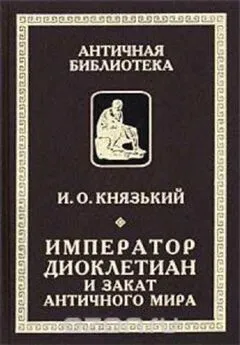


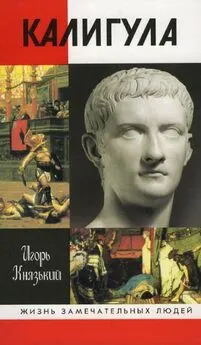
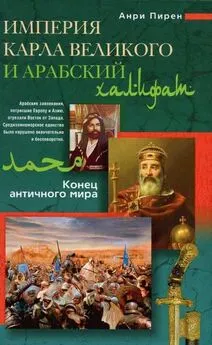

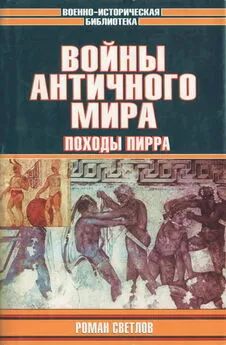
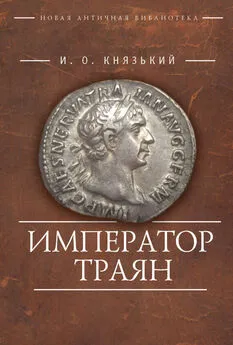
![Татьяна Забалуева - Всеобщая история архитектуры и строительной техники [Учебник. В 3 частях. Часть 1. История архитектуры и строительной техники Древнего и античного мира]](/books/1089140/tatyana-zabalueva-vseobchaya-istoriya-arhitektury-i-s.webp)
